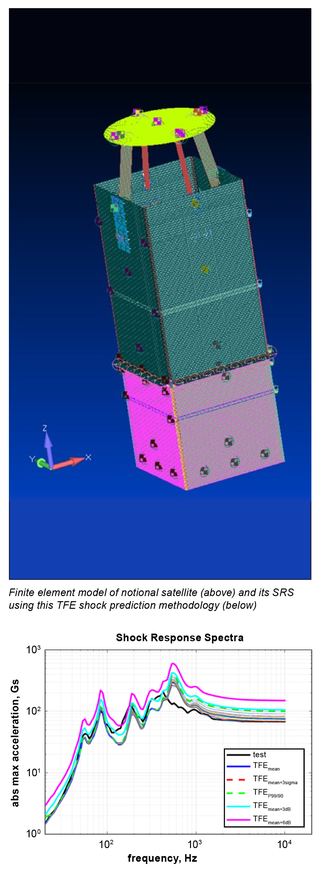In a major departure from prior methodologies, a physics-based shock prediction method has been created, executed, and compared against test results. Traditionally, shock response spectra (SRS) prediction has been extremely challenging.
Download PDF: New Transient Finite Energy Shock Prediction Methodology
In a major departure from prior methodologies, a physics-based shock prediction method has been created, executed, and compared against test results. Traditionally, shock response spectra (SRS) prediction has been extremely challenging. It has been consistently considered a top challenge by the Loads and Dynamics TDT, most NASA centers, and industry.
Despite being required by many aerospace projects, NASA and industry recognize that current shock predictions are reliant on the analysts performing them and are unreliable. It is typical, but not desired, to have open programmatic and potential technical risks related to shock prediction and margins late in the design cycle. Therefore, government and industry will benefit from improved shock prediction, not only for design, but also for risk mitigation.
Transient Finite Energy (TFE) is formulated by decoupling the impulsive shock input from propagation through the structure. It is considered physics based because it solves for an actual physical input forcing function called the TFE forcing function (TFE FF). Physically, a shock source behaves as an impulsive force applied to a structure, or a sudden release of strain energy within a structure. The basic shape of the shock source force impulse is best modeled by a half sine. The physical phenomenon can be explained as a sudden expansion and contraction of the system, due to the half sine impulse.
The TFE FF is calculated by connecting three domains: SRS, Fourier spectra, and time. A shock synthesis is performed over the input SRS. The resulting time history is transformed to the frequency domain via a Fourier transform and multiplied by the driving point apparent mass of the structure at the shock source location. The resulting force spectrum is inverse Fourier transformed to obtain the TFE FF time history. A Monte Carlo simulation is then performed applying the TFE FFs and calculating the mean SRS response. A dynamic uncertainty factor (DUF) is then added.
There are two TFE calculation modes: TFE FEM/analysis and TFE test based. TFE analysis uses an FEA transient analysis solution or steady-state transfer accelerations for prediction, compared to the TFE test-based mode, which uses transfer accelerations produced by a hammer tap. FEM-based TFE has been validated and envelopes SRS measurements with reasonable DUFs (1.4 and 2.0 for 3 and 6 dB, respectively). The NESC report, “Transient Finite Energy (TFE) Predictor” is available from ntrs.nasa.gov.
For more information contact daniel.s.kaufman@nasa.gov and arya.majed@appliedstructuraldynamics.com.
































